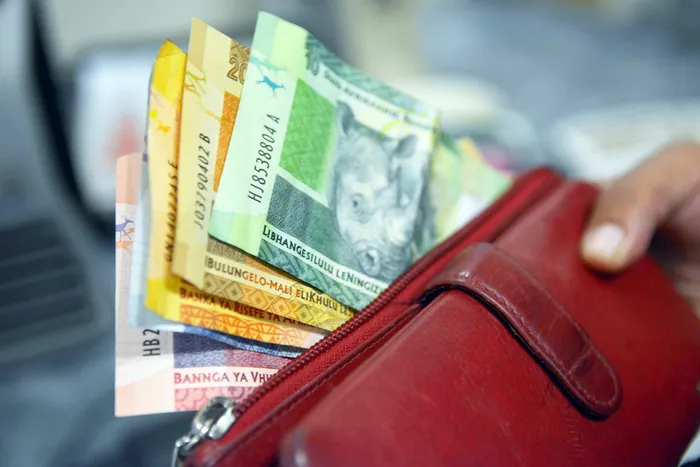South Africa’s take-home pay growth slows as interest rate decision sooms
ECONOMY

Average take-home pay in South Africa decelerated for the second consecutive month in April, intensifying focus on the interest rate decision by the SA Reserve Bank scheduled for Thursday.
Image: Independent Newspapers Archives
Average take-home pay in South Africa decelerated for the second consecutive month in April, intensifying focus on the interest rate decision by the SA Reserve Bank (SARB) scheduled for Thursday.
The BankservAfrica Take-home Pay Index (BTPI), tracking salaries of approximately 3.8 million workers, reported a nominal average take-home pay of R17 495 in April, down 2.0% from R17 846 in March. Despite this slowdown, pay remains 13.8% higher than the R15 370 recorded a year ago.
Shergeran Naidoo, BankservAfrica’s head of Stakeholder Engagements, noted that while take-home pay has seen gains since mid-2024, recent global and domestic economic pressures are dampening momentum. “The upward trend in salaries marked a positive shift after years of stagnation, but escalating global trade tensions are weighing on confidence, slowing economic activity,” Naidoo said.
Real take-home pay, adjusted for inflation, also declined by 2.2% to R15 005 in April from R15 344 in March, though it remains above year-ago levels.
Independent economist Elize Kruger noted that South Africa’s consumer inflation, which dropped to 2.8% in April 2025, has bolstered purchasing power.
“With headline CPI projected to average 3.4% in 2025, down from 4.4% in 2024, we’re seeing the lowest inflation since 2020’s 3.3%,” Kruger said. She attributed this to a stronger Rand and falling international oil prices, which are expected to drive further fuel price cuts in June despite a recent fuel levy hike.
However, economic challenges persist. Early data suggest South Africa’s quarterly 2025 real gross domestic product growth may be flat or negative, reflecting global trade war impacts and subdued domestic demand.
The repo rate, currently at 7.5%, translates to a real repo rate of 4.1% - well above the neutral rate of 2.8%. This restrictive monetary stance, combined with unchanged tax brackets and new levies from the 2025 National Budget, continues to squeeze households.
Kruger said a modest 25 basis-point rate cut at the upcoming SARB Monetary Policy Committee meeting could provide relief.
“Lowering borrowing costs would ease pressure on households and businesses, potentially boosting confidence and investment,” she said. However, she cautioned that a more aggressive cut is unlikely given the SARB’s cautious approach.
Global trade disruptions and sluggish local growth have trimmed economic forecasts, raising concerns about job and income prospects. Kruger stressed the need for structural reforms to address energy, logistics, and governance bottlenecks. “These reforms are critical to unlocking growth and shielding the economy from external shocks,” she said.
The low inflation environment, supported by a recovering Rand and cheaper oil, offers the SARB room to ease monetary policy, following the lead of other developed and developing economies. Yet, debates over lowering the inflation target band could delay relief. “Prolonged high interest rates are punishing the economy unnecessarily,” Kruger warned.
As South Africans await the SARB’s decision, the slowdown in take-home pay underscores the delicate balance between fostering growth and managing inflation. With global uncertainties looming, the central bank’s next steps will be pivotal for salary earners hoping for financial respite.
BUSINESS REPORT
Visit: www.businessreport.co.za